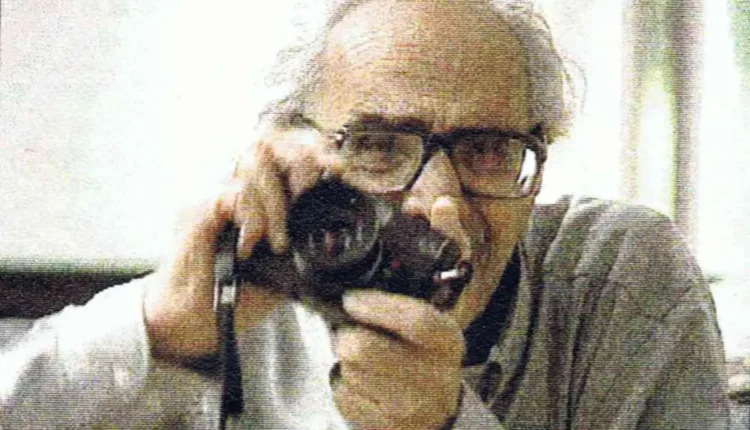Samuel Bejan Tata was not just a photographer—he was a visual historian, an artist who used his lens to freeze moments of cultural significance, human emotion, and political change. Born on September 30, 1911, in Shanghai, China, to a Parsi family, Tata’s work spanned continents, cultures, and eras.
Over the course of his illustrious career, Samuel Bejan Tata captured everything from intimate portraits to transformative moments in history, leaving a legacy that would inspire generations of photographers and storytellers alike. His journey from the pictorialism tradition in Shanghai to becoming one of Canada’s most celebrated photographers was nothing short of extraordinary.
Samuel Bejan Tata’s entry into photography began in Shanghai, where he learned from renowned mentors like Lang Jingshan and Liu Xucang. Samuel Bejan Tata embraced the rich tradition of pictorialism—a style focused on creating images that emulated paintings—using lighting and additive techniques to bring depth to his portraits. This artistic approach was an important foundation for Tata, shaping his early years of photography during the political unrest in Shanghai.
During this period, Samuel Bejan Tata largely confined himself to portraiture, capturing the essence of his subjects while honing his technical skills. The occupation of Shanghai by the Japanese in 1937 limited his ability to venture into photojournalism, but this period allowed him to perfect his art in portraiture.
Transformation in India: The Cartier-Bresson Influence
A pivotal moment in Tata’s career came in 1946 when he moved to India and met the legendary French photographer Henri Cartier-Bresson. Their meeting in Bombay sparked a friendship that would fundamentally change Tata’s approach to photography.
Cartier-Bresson’s emphasis on capturing candid, unposed moments inspired Tata to shift from the formalities of pictorialism to a more spontaneous and natural style. This transformation allowed Tata to dive deeper into street photography and photojournalism, bringing raw, real-life moments into focus.
Tata’s time in India became a rich chapter in his life, as he worked with Indian periodicals like Trend and Flashlight. These publications featured his photographs that vividly portrayed the lives, struggles, and vibrancy of India’s streets. Through these images, Tata captured the soul of a nation in transition, as it moved toward independence.
A Witness to Revolution: Shanghai and Beyond
In 1949, Samuel Bejan Tata returned to his native Shanghai, accompanied at times by Cartier-Bresson, to document a seismic shift in China’s political landscape. The fall of the Kuomintang and the takeover by Communist troops were historic moments, and Tata was there with his camera to capture them.
However, political censorship in China during this period posed a significant threat to his work. Despite many of his early photographs being seized by authorities, Tata successfully smuggled crucial images of the revolution out of the country, preserving his visual documentation of a changing world.
The courage Samuel Bejan Tata displayed during this period exemplifies the power of photography in bearing witness to history. His images were not just pictures—they were testaments to the turbulence and transformation of societies, documenting moments that words alone could never fully express.
The Canadian Chapter: A New Frontier in Portraiture
In 1956, Samuel Bejan Tata, along with his family, moved to Montreal, Canada. Here, his career took a new turn as he began working with the National Film Board and contributing to prestigious publications like National Geographic, Macleans, Time, and Chatelaine. His ability to adapt to new environments and cultures allowed him to become one of Canada’s most prominent portrait photographers.
What made Tata’s portrait work so unique was his ability to make his subjects comfortable, often capturing them in their own homes amidst their personal belongings. This technique gave his portraits a deeply personal and intimate quality. He believed that true human connection came from letting his subjects relax and express themselves, resulting in some of the most evocative portraits of Canadian literary and artistic figures.
From Leonard Cohen to Alice Munro, Tata’s portfolio of Canadian icons is a remarkable body of work, representing a who’s who of cultural significance. His portraits did more than merely depict— they revealed the souls of their subjects, creating a lasting emotional impact on viewers.
An Enduring Legacy
Samuel Bejan Tata’s life was filled with recognition and accolades. In 1982, he was honored with the Canada Council’s Victor Martyn Lynch-Staunton Award, and in 1990, he received a lifetime achievement award from the Canadian Association of Professional Image Creators. His work was also immortalized in several exhibitions, including a major retrospective in 1988 called The Tata Era, which toured Canada, showcasing the breadth of his career.
Even after his death on July 3, 2005, Tata’s legacy continues to inspire photographers, historians, and art lovers. His images are housed in prestigious institutions like the National Gallery of Canada and continue to be exhibited worldwide. The photographs he took, from the streets of Shanghai to the homes of Canadian artists, are a testament to the enduring power of visual storytelling.
In 2015, Canada Post issued a stamp featuring one of Tata’s photographs, titled Angels, which he captured during Saint-Jean-Baptiste Day in 1962. This honor speaks to the lasting impression Tata left on Canadian culture and the world of photography.
Also Read:Harinder Jeet Singh Takhar: Balancing Politics, Business, and Community Leadership

